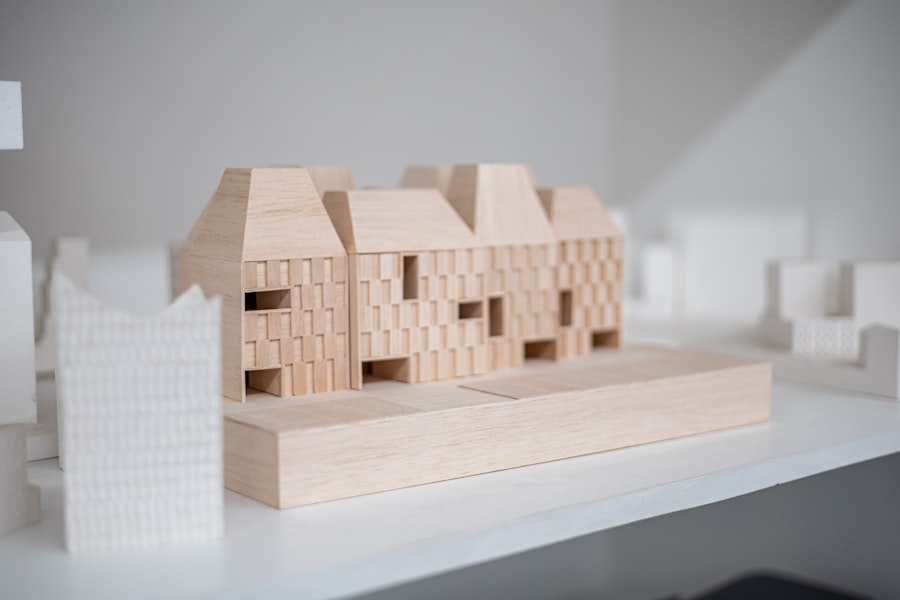Modular homes are a unique and innovative approach to residential construction, distinguished by their method of assembly. Unlike traditional homes built entirely on-site, modular homes are prefabricated in sections or modules in a factory setting. These modules are then transported to the building site, where they are assembled on a permanent foundation.
This process not only streamlines construction but also allows for greater precision and quality control, as the modules are built in a controlled environment, free from the unpredictability of weather conditions that can delay traditional builds. The construction of modular homes involves a series of steps that begin with design and planning. Homebuyers can choose from a variety of pre-designed models or work with architects to create a custom layout that meets their specific needs.
Once the design is finalized, the modules are constructed using standard building materials and techniques, ensuring they meet local building codes and regulations. After the modules are completed, they are transported to the site, where they are assembled and connected to utilities such as water, electricity, and sewage systems. This efficient process can significantly reduce the time it takes to build a home, often allowing families to move in within a matter of weeks rather than months.
Key Takeaways
- Modular homes are built in sections in a factory and then transported to the site for assembly, offering a faster construction timeline and cost savings.
- Choosing a modular home for sale can provide benefits such as customization options, energy efficiency, and lower construction costs compared to traditional homes.
- When finding the right modular home for your lifestyle and budget, consider factors such as location, size, layout, and customization options.
- Modern design and customization options for modular homes include various architectural styles, interior finishes, and sustainable features to suit individual preferences.
- The process of purchasing a modular home involves selecting a floor plan, customizing the design, obtaining permits, and coordinating delivery and installation.
The Benefits of Choosing a Modular Home for Sale
One of the most compelling advantages of modular homes is their cost-effectiveness. Because they are built in a factory setting, manufacturers can take advantage of economies of scale, reducing material costs and labor expenses. This often translates into lower prices for consumers compared to traditional site-built homes.
Additionally, the speed of construction means that buyers can save on financing costs, as they spend less time waiting for their home to be completed. The affordability of modular homes makes them an attractive option for first-time homebuyers or those looking to downsize without sacrificing quality. Another significant benefit is the flexibility and variety available in modular home designs.
Buyers can choose from an extensive range of styles, sizes, and layouts, allowing them to find a home that perfectly suits their lifestyle and preferences. Many manufacturers offer customizable options, enabling buyers to select finishes, fixtures, and floor plans that reflect their personal taste. This level of customization is often more challenging to achieve with traditional homes, where changes during construction can lead to delays and increased costs.
Modular homes empower buyers to create a living space that is uniquely theirs while still benefiting from the efficiency of factory-built construction.
Finding the Right Modular Home for Your Lifestyle and Budget

When searching for the ideal modular home, it is essential to consider both lifestyle needs and budget constraints. Start by assessing your current and future requirements—how many bedrooms do you need? Will you require additional space for a home office or guest room?
Understanding your priorities will help narrow down your options and ensure that you select a home that accommodates your lifestyle both now and in the years to come. Budget is another critical factor in the decision-making process. Modular homes can vary significantly in price based on size, design complexity, and customization options.
It is advisable to establish a clear budget before beginning your search, taking into account not only the cost of the home itself but also additional expenses such as land acquisition, site preparation, utility connections, and any necessary permits. Many modular home manufacturers provide transparent pricing structures that can help potential buyers understand what they can expect to pay for different models and features. By aligning your lifestyle needs with your budgetary constraints, you can make an informed decision that leads to long-term satisfaction with your new home.
Exploring Modern Design and Customization Options for Modular Homes
| Design Options | Customization Features | Benefits |
|---|---|---|
| Open floor plans | Customized kitchen layouts | Enhanced flow and spaciousness |
| Energy-efficient windows | Solar panel integration | Lower energy costs and eco-friendly |
| Modern exterior finishes | Customized siding and roofing options | Increased curb appeal and personalization |
| Smart home technology | Customized automation systems | Convenience and energy savings |
The design possibilities for modular homes have evolved significantly over the years, reflecting contemporary architectural trends and consumer preferences. Modern modular homes often feature open floor plans that maximize space and natural light, creating an inviting atmosphere for family gatherings and entertaining guests. Large windows, high ceilings, and seamless transitions between indoor and outdoor spaces are common elements in today’s designs, allowing homeowners to enjoy their surroundings fully.
Customization options further enhance the appeal of modular homes. Many manufacturers offer a range of finishes and upgrades that allow buyers to personalize their living spaces. From selecting cabinetry styles and countertops to choosing flooring materials and exterior finishes, homeowners can tailor their homes to reflect their unique tastes.
Some companies even provide eco-friendly options such as sustainable materials or energy-efficient appliances, enabling buyers to create a stylish yet environmentally conscious living space. This level of customization ensures that modular homes can cater to diverse aesthetic preferences while maintaining functionality.
The Process of Purchasing a Modular Home: What to Expect
Purchasing a modular home involves several key steps that differ from traditional home buying processes. Initially, prospective buyers should conduct thorough research on various manufacturers and models available in their desired area. It is essential to evaluate the reputation of different builders by reading reviews, checking references, and visiting completed projects if possible.
Once you have identified potential manufacturers, you can begin exploring specific models that align with your needs. After selecting a model, the next step typically involves securing financing. Many modular home builders have partnerships with lenders who specialize in financing prefabricated homes, making it easier for buyers to navigate this aspect of the process.
Once financing is secured, buyers will work closely with the manufacturer to finalize design choices and specifications. This stage may include selecting finishes, layouts, and any additional features desired. Following this agreement, the manufacturer will begin constructing the modules while simultaneously preparing the site for installation.
The final phase involves transporting the completed modules to the site and assembling them on the foundation—a process that can often be completed in just a few days.
Financing Options for Modular Homes: Making Affordable Living a Reality

Financing a modular home can be straightforward if you understand the available options. Traditional mortgage lenders may offer loans specifically tailored for modular homes, recognizing them as real property once they are installed on a permanent foundation. These loans typically function similarly to conventional mortgages but may require different documentation or appraisal processes due to the unique nature of modular construction.
In addition to conventional financing options, there are government-backed programs designed to assist homebuyers in purchasing modular homes. For instance, the Federal Housing Administration (FHA) offers loans that cater specifically to manufactured and modular homes under certain conditions. These loans often come with lower down payment requirements and more flexible credit criteria than traditional mortgages, making them accessible for first-time buyers or those with limited financial resources.
Understanding these financing avenues can empower potential homeowners to make informed decisions about how best to fund their new modular home.
Sustainability and Energy Efficiency in Modular Home Construction
Sustainability is an increasingly important consideration in modern construction practices, and modular homes are no exception. The factory-based construction process minimizes waste by allowing builders to optimize material usage more effectively than traditional site-built methods. Additionally, many manufacturers prioritize eco-friendly materials and practices in their construction processes, further reducing environmental impact.
Energy efficiency is another hallmark of contemporary modular homes. Many builders incorporate advanced insulation techniques and energy-efficient windows into their designs, which help reduce heating and cooling costs over time. Furthermore, homeowners have the option to install renewable energy systems such as solar panels or geothermal heating systems during construction or as future upgrades.
By investing in energy-efficient features from the outset, buyers can enjoy lower utility bills while contributing positively to environmental sustainability.
Tips for Maintaining and Caring for Your Modular Home
Maintaining a modular home requires attention similar to that of any traditional home; however, there are specific considerations unique to modular construction that homeowners should keep in mind. Regular inspections of structural elements such as joints and connections are essential to ensure that everything remains secure over time. Additionally, checking seals around windows and doors can help prevent air leaks that may lead to increased energy costs.
Routine maintenance tasks such as cleaning gutters, inspecting roofing materials for wear or damage, and servicing HVAC systems should also be prioritized. Modular homes often come with warranties covering various components; understanding these warranties can help homeowners address issues promptly without incurring unexpected expenses. By staying proactive about maintenance and care, owners can ensure their modular homes remain comfortable and functional for years to come while preserving their investment’s value.

